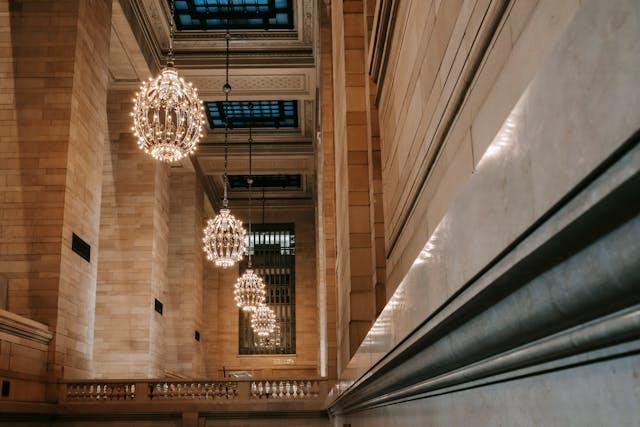
Interior design transcends mere aesthetics, reflecting cultural, technological, and social evolutions throughout history. It encapsulates the functional, expressive, and aesthetic preferences of different times and places. This comprehensive exploration into the history of interior design offers a framework for understanding how past influences shape contemporary practices. One can gain insights into this transformative art through resources like an interior design online course which can provide extensive historical background that enriches the learner's appreciation and application of design principles.
The Ancient Foundations
The history of interior design begins in the ancient civilisations of Egypt, Greece, and Rome, where the initial concepts of architectural beauty and interior aesthetics were born. Egyptians emphasised comfort and elegance, integrating furniture and décor that reflected their religious and social status. Greek interiors were marked by simplicity, functionality, and harmony, whereas Romans introduced innovations such as mosaics and elaborate frescoes, signifying wealth and status. These cultures laid the groundwork for understanding spatial arrangement and decorative elements, which are still relevant concepts in modern design courses and practices. A reputable online interior design course covers these foundational elements in depth, providing learners with interactive modules that explore ancient design techniques and their implications for modern practices. These courses often include virtual tours of historical sites and discussions on the cultural significance of design choices, which help learners visualise and understand ancient aesthetics in a contemporary context.
The Medieval and Renaissance Influence
Moving into the medieval period, interior design was predominantly influenced by the Byzantine, Romanesque, and Gothic architectural styles. This era saw a stark contrast between the luxury of religious structures and the simplicity of residential living spaces. The Renaissance reinvigorated interest in the arts and saw a revival of classical ideologies and aesthetics. Interiors became more focused on symmetry, proportion, and the integration of art, inspiring a holistic view of the indoor environment. This period heavily influences current design philosophies, emphasising the importance of balance and proportion in creating harmonious spaces. Online courses on interior design delve into these historical influences, offering detailed analyses of medieval and Renaissance elements crucial for modern design. Students learn to incorporate these timeless principles into contemporary settings through assignments and case studies, enhancing their design acumen.
The Baroque and Rococo Eras
The Baroque glitz and the Rococo periods' delicacy marked a significant evolution in interior design, characterised by ornate details, luxurious materials, and dramatic colour schemes. These styles were distinguished by their dynamic movement and exquisite ornamentation, reflecting their times' social and political changes. The Baroque style was more about grandeur and power, while Rococo was lighter and favoured pastel colours and more intimate spaces. Both styles contribute to a modern design by encouraging a bold use of colour, texture, and form. Students enrolled in an esteemed online interior design course can explore these eras through multimedia content and expert-led webinars that illustrate how Baroque and Rococo designs can be adapted for modern interiors. The courses often encourage learners to experiment with these styles in digital simulations, fostering a practical understanding of how historical influences can be transformed into innovative modern interiors.
The Industrial Revolution's Impact
The Industrial Revolution introduced new materials and mass production techniques, leading to significant changes in interior design. With the advent of technologies like steel, glass, and later plastics, designers had more flexibility to experiment with forms and structures. This era also saw the rise of the middle class, democratising design and making it more accessible. The changes industrialisation brings are critical in any interior design online course, highlighting how technological advancements can influence design trends and practices. Courses covering this period typically include detailed studies of how industrialisation changed the interior design landscape, from modular designs to synthetic materials. These courses often feature interactive discussions and project-based learning that encourage students to consider how these innovations can be applied in contemporary design scenarios. Furthermore, learners are allowed to explore case studies of iconic industrial-era buildings and interiors, gaining insights into the transition from artisanal to mass-produced designs, which can serve as inspiration for blending historical techniques with modern aesthetics.
Modernism and Postmodernism
Modernism in interior design emerged as a response to the excesses of previous styles and the changes brought about by the 20th century. It emphasised minimalism, functionalism, and the use of modern materials. Conversely, postmodernism embraced complexity and contradiction, featuring eclectic mixes of traditional and contemporary styles. These movements underscore the ongoing dialogue between form and function, an essential theme in modern interior design education and practice.
The history of interior design is a fascinating journey through time, reflecting humanity's social, economic, and cultural transformations. Each era brought unique contributions, laying the foundations for contemporary design principles and practices. By studying the evolution of interior design, learners can appreciate the depth and breadth of this field and apply these insights to create functional and aesthetically pleasing spaces. Understanding this rich history is crucial for anyone looking to make a significant impact in the world of interior design today.
Disclaimer: This post was provided by a guest contributor. Coherent Market Insights does not endorse any products or services mentioned unless explicitly stated.





